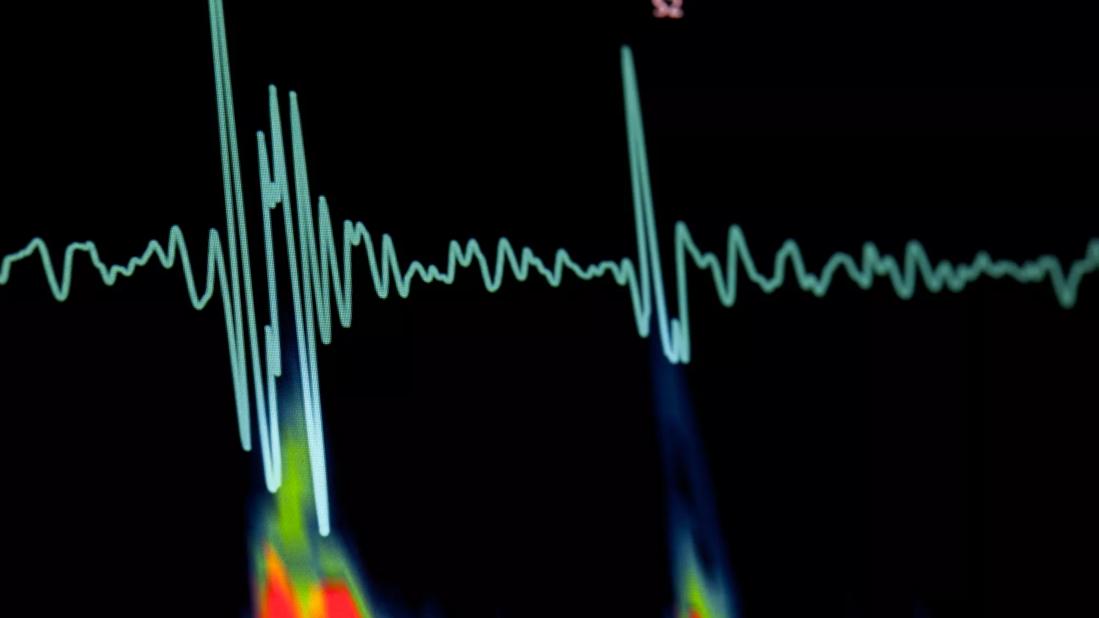Advertisement
Study demonstrates significant gender, race and age differences

Sudden cardiac death in children is rare, but particularly devastating because of the shock factor. A vital young athlete scores a soccer goal one minute and collapses on the field the next. What happened? Why did no one know?
Advertisement
Cleveland Clinic is a non-profit academic medical center. Advertising on our site helps support our mission. We do not endorse non-Cleveland Clinic products or services. Policy
Cleveland Clinic pediatric cardiologist Elizabeth (Tess) Saarel, MD, administers hundreds of ECGs on young people every year to try to prevent this very thing, by detecting signs of heart disease that could lead to sudden death. “The most dangerous conditions are inherited arrhythmia syndromes like long QT, and hypertrophic or dilated cardiomyopathies,” Dr. Saarel explains. “So we are doing a lot more screening with ECGs of children who might be at risk, and even seemingly healthy children, as part of an office exam or pre-sports physical.” The negative corollary to this new vigilance, however, is that cardiologists find a high number of false positives, subjecting many children and their families to an often agonizing wait for a diagnostic echocardiogram or other test.
Dr. Saarel says many of these echoes are unnecessary. “We all know the current normal values (expressed as an aggregate normal range for all children) are wrong, but we have to go by the standards. So if an ECG is outside the 98th percentile range, I have to do a follow-up echo.”
To find out why they are wrong, Dr. Saarel, funded by the Pediatric Heart Network (NIH), led a retrospective study of 2,400 pediatric ECGs to see if her suspicions about differences in the readings for these healthy hearts (confirmed by echo) varied by gender, age and race. The outcomes of the study were as predicted: She and her colleagues found significant differences in key readings between various groups. The findings were published in an article, “Electrocardiograms in Healthy North American Children in the Digital Age,” (Circulation: Arrhythmia and Electrophysiology, July 2018).
Advertisement
Dr. Saarel was most interested in the lead II and V6 differences. A prolonged QT interval detected in lead II is most indicative of a potentially serious arrhythmia, and a high R wave detected in V6 is a red flag for a cardiomyopathy. Her group’s findings, however, showed that “normal” ranges vary depending on gender, race and age. Girls with normal hearts have longer QT intervals than boys, and boys with normal hearts have higher R waves than girls. African American children in most age groups have higher R wave values. Different age groups have different ranges of normal.
The American Heart Association established current guidelines based on two key studies, by Davignon et al., and Rijnbeek et al. The populations for these studies, however, were very limited. The Davignon study included a narrow geographic band of Canadian children, and the Rijnbeek study was of mostly children of Dutch descent. “Contrast these populations with ours in the United States. We have a more diverse population, including a large number of African American and Hispanic children here, and their differences haven’t been accounted for in the norms,” Dr. Saarel explains.
Dr. Saarel’s study was prompted by a Pediatric Heart Network member ranking of important issues. “This made it to the top of the list,” Dr. Saarel says. The American Heart Association revises standards every decade, so this study and subsequent research will be considered in the upcoming revision expected within the next couple of years.
Advertisement
Beyond establishing better stratified normal ranges, there are still problems correlating true abnormal findings with sudden death. A recent New England Journal of Medicine article described findings of a cardiac screening program among 11,168 adolescent and mostly male soccer athletes in the United Kingdom, eight of whom ultimately died of sudden cardiac death. The study found that six of the eight teenagers who died had passed the screening, which included both an ECG and an echocardiogram. Seven of these deaths were from a cardiomyopathy, something readily picked up in an echo. The key to this conundrum may be the mean time between screening and death, which was 6.8 years. Are annual or semi-annual screenings warranted? “This is another area where we need to revisit guidelines,” Dr. Saarel reflects.
Dr. Saarel sees three important next steps in refining normal ranges:
In her clinical work, Dr. Saarel looks forward to a time when there are fewer false alarms. “I worry about overdiagnosing as much as underdiagnosing. Telling a child they may have a problem and then restricting them from playing their sports is a big deal. If they miss the beginning of a season, there are social and psychological effects.” She looks to the capabilities of artificial intelligence (AI) to help sort out differences in the ECG waves. “AI can pick up things we miss with just our eyes. Combine cloud-based data gathering with AI as partners in interpreting digital ECGs, and we will learn a great deal more about how to best detect disease and monitor changes in our young patients’ ECGs.”
Advertisement
Advertisement

5 biggest changes according to Cleveland Clinic experts

Largest study to date confirms mortality rates similar to DBD transplant and reveals risk factors

As use for atrial arrhythmias surges, studies turn to ventricular arrhythmias

Staged pivotal noninferiority study is comparing BrioVAD with HeartMate 3

Phase 3 TANDEM study may help pave way to first approval of a CETP inhibitor

Yet 21.4% of tested individuals had Lp(a) elevation

While results were negative for metformin, lifestyle counseling showed surprising promise

Launch of the tool promises to reshape quality assessment across the specialty